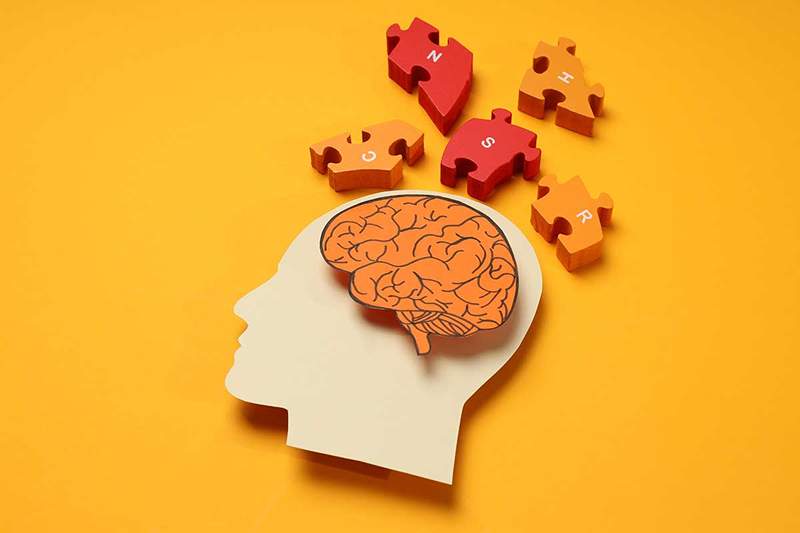What is semantic memory and how it works

- 4102
- 1137
- Lorenzo West I
Semantic memory is a component of the long -term memory system that It deals with storing and recovering general and conceptual information, that is, the knowledge we accumulate about the world around us.
Semantic memory is that essential part of our brain that allows us to store and recover this general knowledge, which allows us in our daily life.
Content
Toggle- Entering semantic memory
- The characteristics of semantic memory
- Semantic memory in action
- References
Entering semantic memory
Semantic memory is like a great archive of knowledge stored in our brain that helps us recognize objects, understand the meaning of words and perform abstract reasoning. Throughout our life, we are accumulating information about the world around us and how things work and all this knowledge is stored in semantic memory and then allows us to interact with our environment effectively.
For example, when we enter a kitchen, we can recognize that an oven is used to cook, a fridge to keep food and a sink to wash the dishes, thanks to the information stored in our semantic memory, obtained from learning and our previous experiences.
The characteristics of semantic memory
Semantic memory is part of the declarative memory, which refers to that knowledge that we can verbally express and consciously remember.
We can divide semantic memory into two types, implicit memory and explicit memory. The implicit memory It is the one we use automatically and without conscious effort, such as when we understand the meaning of a word that we have just heard without having to think about it. Instead, Explicit memory, Yes it requires a conscious effort to remember information, such as when we try to remember the capital of a country.
One of the most important characteristics of semantic memory is its independence from the context; Unlike episodic memory, which focuses on specific events and personal experiences, Semantic memory is independent of the context in which the information was acquired, Thus, for example, we can remember that water boils at 100 degrees Celsius without remembering when or where we learned that data.
The information stored in semantic memory is stable and lasting, Resisting the passage of time and oblivion, in addition, is organized hierarchically, which means that stored concepts are grouped into categories and subcategories, facilitating the recovery of related information. For example, if we think of the category of "fruits", we are likely to remember subcategories such as "citrus" or "tropical" and related concepts such as "orange" or "pineapple".
 37 famous phrases by Lev Vygotsky about childhood and learning
37 famous phrases by Lev Vygotsky about childhood and learning Semantic memory in action
Semantic memory plays a fundamental role in our social and communicative skills, and allows us to understand cultural norms and social expectations, which facilitates interaction with others. For example, if we travel to another country, semantic memory helps us remember the customs and social norms of that place, such as the fact that in Japan it is considered good education to greeted, instead of shaking hands.
In addition, semantic memory is crucial for our decision -making and problem solving process, since It allows us to use previous knowledge to address new and unknown situations. For example, if you face the task of setting up a piece.
Even in daily activities such as cooking, semantic memory plays an important role in allowing us to remember the necessary ingredients and steps to prepare a recipe. For example, we can remember that to make a potato tortilla we need potatoes, eggs, olive oil and salt, and that we must fry the potatoes before mixing them with the beaten eggs.
Semantic memory also helps us to understand and appreciate art, music and literature, by providing us with the cultural and contextual knowledge necessary to understand and enjoy these creative expressions. For example, we can understand the symbolism of a painting by recognizing the objects and figures represented and relating them to our semantic memory of cultural concepts and beliefs.
Also It is fundamental in the acquisition of new knowledge and skills. By learning a new language, for example, it helps us to remember the meaning of grammatical words and rules, which allows us to communicate effectively in that language.
Semantic memory also allows us.
In short, semantic memory is a fundamental component of our ability to remember and understand the world that surrounds us by allowing us to store and recover general and conceptual information, which helps us interact with our environment, communicate effectively and make informed decisions.
Although semantic memory often works automatically and conscious effortless, It is an invaluable knowledge of knowledge that helps us navigate in our daily lives. As we continue to accumulate information and experiences, our semantic memory expands and enriches itself, allowing us to face new challenges and opportunities with confidence and wisdom.
References
- "Semantic Memory: Definition & Example" - https: // www.Livescience.com/42920-Semaantic-Memory.HTML
- "Semantic Memory Overview" - https: // www.Scientedirect.com/Topics/Medicine-And-Dentary/Semantic-MEMORY
- "What is memory" -https: // www.Varywellmind.com/Semantic-MEMORY-2795359
- « Biography of Mara Selvini Palazzoli (1916-1999)
- Short -term memory, characteristics and functions »

